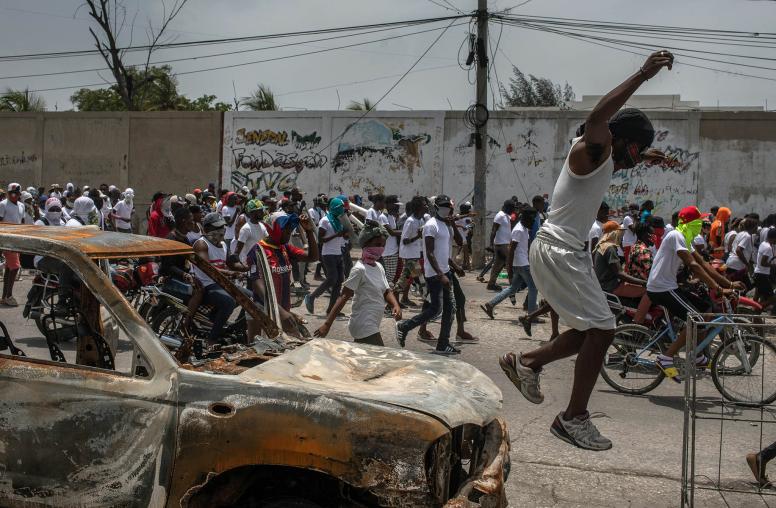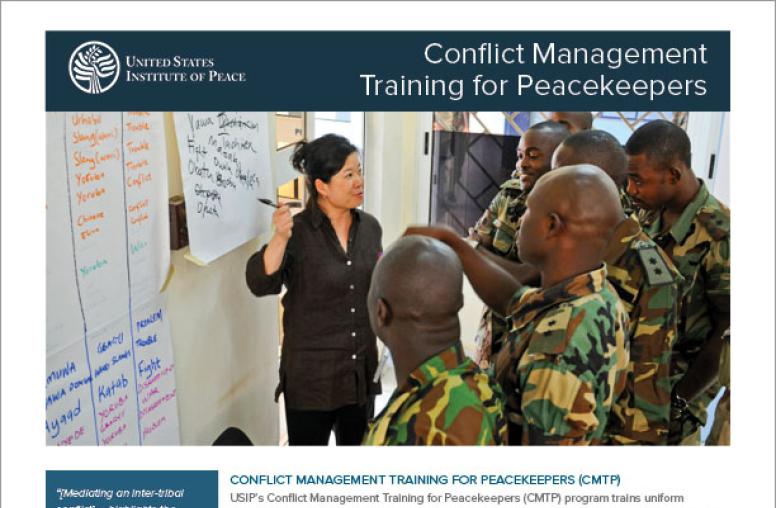Islamic Law: Getting Beyond the Bombast
A Google News search for the term “Shari’a law” can turn up scary results. A rape victim convicted for extramarital sex. An editor sentenced to prison time and 600 lashes for allegedly propagating liberal thought.

But in the typical news report, the term Shari’a is often used interchangeably with Islamic law and there’s usually no discussion of what Islamic law really says about the issue at hand.
Even most Western lawyers and other peacebuilding specialists trying to cultivate the rule of law in a transitional society might be surprised that the term Shari’a appears only once in the Muslim holy book the Koran, or that it has a much more narrow meaning than the full body of Islamic law, or that Islamic law is the product of rational thought and subject to change over time.
Those are just a sample of the basics. A new manual written by Hamid Khan, an expert in Islamic law at USIP who also teaches at George Washington University Law School, sets out to dispel the myths and explain the sources, main doctrines, institutions and terminology of Islamic law for those who work on developing the rule-of-law.
The Practitioner’s Guide to Islamic Law, published by the International Network to Promote the Rule of Law (INPROL), addresses how such law operates either separately or within existing legal systems such as in nation states or in reference to international law. Topics include Islamic law in places like the Indian subcontinent and in the Middle East, Islamic criminal procedure and Islamic property law.
“Much of what practitioners know, or think they know, is derived from media accounts that equate discrimination against women, forced marriages, honor killings, and suicide bombings with Islamic law,” Khan writes in the guide, funded by the State Department’s Bureau of International Narcotics and Law Enforcement Affairs. “As a consequence, the term “Islamic law” is often conflated with the Shari’a, which itself has been turned into an ugly word.”
Khan is a senior program officer with USIP’s Center of Innovation in Rule of Law, where he works on issues such as Afghanistan and transitional justice and teaches courses for USIP’s Academy for International Conflict Management and Peacebuilding, such as Understanding Islamic Law. A former assistant U.S. attorney in Colorado, he previously was a post-doctoral fellow in Stanford Law School’s Afghanistan Legal Education Project and has represented several detainees held at the U.S. Navy base in Guantanamo Bay, Cuba, as well as a class of mentally ill plaintiffs in Colorado.
“Islamic law is one of the oldest systems of law, having emerged more than fourteen centuries ago,” Khanwrites. “Like the system of common law originally developed in medieval England or the system of civil law that first evolved in ancient Rome, Islamic law should be regarded as a body of law, or a system of law, rooted in history but very much alive today.”
During a two-day seminar convened in December for a NATO project and held at the Swedish National Defense College in Stockholm, Khan said the alliance needs to be better prepared in the future to understand Islam because many future contacts likely will involve societies where that religion forms a common underpinning.
Islam is the majority religion in more than 50 countries, and Muslims number about 1.6 billion worldwide. Indonesia, India, Pakistan, and Bangladesh are the nations with the highest number of Muslims, even though they form only 14 percent of India’s population. Those countries are followed by Nigeria, Egypt, Iran, Turkey, Algeria and Morocco, according to the Pew Forum on Religion and Public Life.
The Practitioner’s Guide to Islamic Law doesn’t get into personal ritual practices but rather focuses on how it affects behavior among individuals and in public and society, including family and personal-status laws.
Khan cites the current debates over the role of Islam in public life and government, especially in the countries of the Arab Spring such as Egypt, Libya and Tunisia.
“Today’s Muslims face a profound question,” he writes. “Do they wish to carry a part of their legacy forward to the present, and, if so, in what form will they carry it – preserved in its pristine state or altered to meet new and unexpected challenges?”
It’s unclear how these debates will turn out, he says.
“But the issues at stake are of interest not just to the countries of the Arab Spring, and not just to the Muslim world, but to the world as a whole.”
Viola Gienger is a senior writer at USIP. The guide can be downloaded here at no cost.



